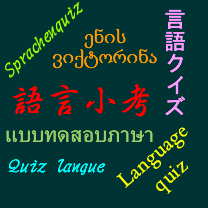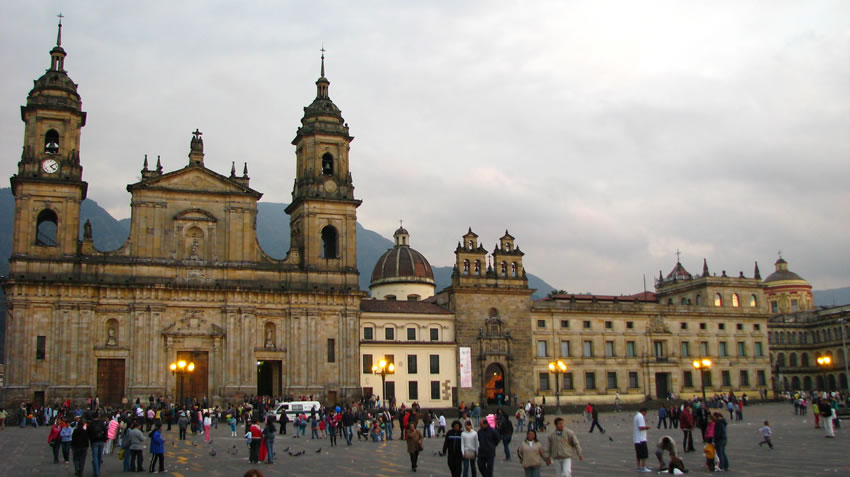
Here’s a recording in a mystery language.
Can you identify the language, and do you know where it’s spoken?

Here’s a recording in a mystery language.
Can you identify the language, and do you know where it’s spoken?
This week I have been speaking quite a bit of Irish. Even though I rarely speak it at home, it is usually there when I need it. When trying to understand songs or poems in Irish, I realise that there are plenty of gaps in my vocabulary, but I can at least get the gist of them.
On Monday night there was a little Russian-speaking corner in the pub made up of three Belarusians, a Bulgarian, and me. I was able to understand quite a bit of what the others were saying in Russian, and to join in occasionally.
Yesterday I learnt a bit about Finnish language and culture from the Finnish guy who is doing the harp course. He told me that Finns tend to be less talkative than people from other countries, but that there is a lot of non-verbal communication between them.
I have also had opportunities to speak a bit of German, and have learnt a bit about German musical terms. For example, in German musical notes are not A to G, but A to H – H refers to B, and B refers to B♭, which is slighly confusing to someone used to the English system.
Do musical notes have other names in your language, or in other languages you know?
Last night I arrived safely in Glencolmcille in Donegal in the northwest of Ireland. I left Peel at 8am, went by bus to Ronaldsway airport, flew to Dublin, then took buses all the way to Glencolmcille, arriving just before 8pm, so it took nearly 12 hours.
I met people I know from previous visits to Ireland along the way – at Dublin airport, in Donegal town, and in Killybegs – so the journey didn’t seem quite so long as I had people to talk to. As they say in Irish, bíonn siúlach scéalach (travellers have tales to tell), and giorraíonn beirt bóthar (two people shorten a road).
On the road and after I arrived in Glencolmcille I had conversations in English, Irish, German, Welsh, and spoke odd bits of Russian, French, Romanian, Swedish and Manx.
Today the courses start – there are courses in Irish language, translation, flute and whistle player, and harp playing (that’s the one I’m doing), and also a group going hill walking every day.
There are people here from many countries, including Ireland, the UK, the USA, Australia, France, Belgium, Luxembourg, Finland, Germany, Switzerland, Belarus, Brazil and Slovakia. So I will have plenty of opportunities to practise my languages.

Here’s a recording in a mystery language.
Can you identify the language, and do you know where it’s spoken?
This week I’ve had quite a few conversations in Manx. I only speak it when I come to the Isle of Man, and when I meet Manx learners at polyglot events. At the beginning of the week my Manx was decidedly rusty, but it’s starting to flow now. When I don’t know a word or phrase in Manx, I switch to Irish, and often get away with it. It helps that some of the Manx speakers I know here also speak Irish.
As well as Manx, and English, I spoke some Welsh last night, and odd bits of Scottish Gaelic, Cornish and Breton.
The performers here for the festival are from the Isle of Man, Scotland and Ireland. The songs have been in English and Manx, and the evening concerts have been introduced bilingually in Manx and English. There aren’t any performers here from Wales, Cornwall or Brittany this year, but there have been in previous years.
Tomorrow I’m off to Glencolmcille (Gleann Cholm Cille) in Donegal in the northwest of Ireland. I will speak plenty of Irish there, and probably other languages, and learn more traditional Irish songs and tunes.
This week I am in the Isle of Man for the CeltFest, a festival of Manx and Celtic music and culture. There are lunchtime concerts every day at the Noa bakehouse in Douglas, and concerts and other events every night in Peel.
Last night I went to a fascinating talk by Alice Roberts, an anatomist, anthropologist and broadcaster, about the history of the Celtic people and languages.
One popular theory is that the Celtic people originated from the Urnfield culture of central Europe during the Late Bronze Age (about 1,200 BC) and spread to many other parts of Europe after that.
The Romans and Greek talk about Celtic people inhabiting parts of Gaul (France), Iberia (Spain and Portugal), northern Italy, Helvetica (Switzerland), Anatolia (Turkey), and parts of eastern Europe. However, no ancient writers mention Celtic people in the British Isles or Ireland. The Ancient Greek historian Herodotus, for example, tells us that “the Celts live beyond the Pillars of Heracles, being neighbors of the Cynesii, who are the westernmost of all the peoples inhabiting Europe.” [source].
The people who spoke Celtic languages in the British Isles, Ireland and Brittany didn’t refer to themselves as Celts before the 18th century. It was Edward Lhuyd (1660-1709) who first used the word Celt in print in 1707 to refer to people who spoke Celtic languages. Before then they were just Welsh, Irish, Scottish, etc [source].
Professor Roberts told us that there is no evidence for large-scale movement of people in Europe during the Iron Age, the time when the Celts were thought to have spread from central Europe. People did move around, taking goods, ideas and technology with them, but not in large enough numbers to show up in the archaeological record.
There is, however, evidence for significant movements of people associated with the Bell-Beaker culture out of the Pontic-Caspian Steppe of central Asia into Europe from about 2,900 BC.
During the Bronze Age, people migrated into Europe from central Asia, bringing their Proto-Indo-European (PIE) language and culture with them. The people already in Europe, apart from the Basques, adopted the new culture and language. Over time the Indo-European languages developed from PIE. The Celtic languages developed mainly in western Europe. They disappeared from continental Europe, apart from in Brittany, after the 6th century AD, and continue to be spoken in parts of the British Isles and Ireland. At least that is my understanding of last night’s talk.
The earliest known inscriptions in a Celtic language date from the 6th century BC and were found in southern Portugal. They are written in an alphabet known as the Southwestern Script, and the language is referred to as Tartessian or South Lusitanian. Professor Roberts suggested that this script developed from the Phoenician script, independently of alphabets elsewhere in Europe, and the Tartessians, or whatever they called themselves, came up with the idea of adding vowels.

Here’s a recording in a mystery language.
Can you identify the language, and do you know where it’s spoken?
![汉字 [漢字] Chinese characters](http://www.omniglot.com/images/blog/hanzi.gif)
One thing Chinese learners often ask about is how many characters they need to know in order to read Chinese.
In a new article I was sent today, there’s some discussion about how many Chinese characters and words you need to know. I decided to check to details provided by the writer, and re-wrote this section based on what I found.
According to the PRC language curriculum standards, by grade 9 Chinese pupils are expected to be able to recognise 3,500 commonly-used characters, and to be able to write 3,000 of them.
According to the BBC languages site, the average educated Chinese person knows about 8,000 characters, but you only need to know 2-3,000 to read a newspaper.
According to this post on Ninchanese, Chinese students who graduate from high school know about 4,500 characters. If you want to be able to read Chinese newspapers you need to know around 2,500 characters, and for other texts maybe 3-4,000 characters. It also mentions that there are 370,000 words listed in the 汉语大词典, a comprehensive Chinese dictionary.
In China urban residents are officially considered literate if they know 2,000 characters, and rural residents if they know 1,500 characters. Based on these definitions, 99% of the population was literate in 2014 [source]. However, if the Ninchanese statistics are true, many people who are defined as literate might struggle to read a newspaper.
Chinese characters are often equated with words. However, each character represents a syllable. Some Chinese words are monosyllabic, and are written with one character, but many have two or more syllables, and are written with two or more characters. So knowing a Chinese character doesn’t necessarily mean that you will understand all the words it appears in.
For example, you may know the character 马 [馬] (mǎ) – horse, but would you know these words?
If you are a native Chinese speaker, or a learner of Chinese, do you know roughly how many characters you can recognise and write?
I studied Mandarin for five years at universities in England and Taiwan, and spent over five years in Taipei. I can read and write traditional and simplified characters, and pinyin and bopomofo. I can read Chinese texts, and even some Classical Chinese, but there are usually quite a few characters and words I don’t know. I’ve only read Chinese literature as part of my studies, and not for pleasure. I would guess that I know maybe 2-3,000 charactes, or at least I used to – I rarely read or write Chinese these days and have forgotten quite a few of them.
This is a guest post by Nate Alger
Have you ever been to Colombia?
If not, you are missing out on one of the best kept secrets in Latin America. It is a country filled with life, lots of culture, and great food to eat!

It’s the place that I have called home for the past 4 months and the country that my wife Andrea grew up in. She has given me some inside information and provided me with some fun Colombian slang words to show you.
We based this article off a YouTube video that we produced featuring actual Colombians speaking the 10 Colombian Slang Expressions. If you want to hear these phrases spoken by actual Colombians than check out the video.
It’s like saying, “What’s up” in English. Or another way of saying it is, “How’s it going?”
It’s a very common phrase used among family, friends, and co-workers. Basically, it’s great in any informal setting. So don’t try this one on your serious Colombian boss.
Here’s an example in a normal Colombian dialogue:
A: Quiubo, ¿Que mas?
B: Bien, gracias a Dios.
Translation:
A: Hows is going, what’s going on? B: Everything is good, thank the Lord.
Both these phrases are extremely popular in Colombia.
It’s the equivalent of saying, “That’s awesome” or “that’s great.” If you think something is really awesome make sure to say, “¡Que bacano!”
Here are a couple examples in daily conversation:
A: Compre un nuevo celular——–B: ¡Que bacano!
A: Si, mi mama me dio la plata—–B: ¿Enserio? ¡Tan bacano!
Translation:
A: I just bought a new cell phone. B: That’s awesome!
A: My mom just gave me money. B: Really? That’s great!
Here’s another one that I hear all the time in Colombia. It essentially means, “What a pain.”
You can also use it if something is really boring. So next time you have a boring project at work or one you really don’t want to do, take a look over at your co-worker and say, “¡Que pereza!”
Here’s a couple examples:
A: Tengo que limpiar mi cuarto, ¡Que pereza!
Translation:
I have to clean my room. What a bore!
A: Debo estudiar cálculo. ———–B: ¿Enserio? ¡Que pereza!
Translation:
A: I have to study calculus. ———-B: Really? That’s so boring!
Are you about to watch a sports game with friends and you need people to chip in for pizza?
It’s time to “hacer una vaca.” This one is only used in the plural form though.
For instance: “Hagamos una vaca” or “Por qué no hacemos una vaca” means “Let’s all put money together for…”
Let’s take a look at this phrase in action:
A: ¡Tengo mucha sed!——B: Hagamos una vaca para la gaseosa.
Translation:
I’m so thirsty. Let’s chip in to buy a soda.
This phrase means, “That’s not fair!” or “That’s not nice!”
Basically, you can use this phrase when you are in a bad situation or something bad happened when someone treated you poorly.
My Colombian wife uses this one a lot whenever I do something she doesn’t like or is upset about.
Here’s an example:
A: Juan no tiene trabajo, su jefe lo despidió.
B: ¿Enserio? ¡Que boleta!, Él es un muy buen trabajador.
Translation:
A: Juan doesn’t have a job because his boss fired him. B: Really? That’s terrible, he is a great worker.

This is one I am trying to use more and more. It means, “Just in case.”
It’s very common in Colombia where I live. If you think it is going to rain, you could make sure to bring an umbrella, “Por si las moscas.”
Here’s an example from a dialogue:
A: Piensas que debo traer repelente?
B: Si, tráelo por si las moscas, quizás hay muchos mosquitos.
Translation:
A: Do you think I should bring insect repellant?
B: Yes, bring it just in case as there might be lots of mosquitos.
You can use this one to signify, “Pay attention!” A common conjugation for most Colombians here is “¡Páreme bolas!”
This signifies someone telling them to pay attention already. My wife uses this one a lot when she tells me to pay attention to what she has to say.
Here’s an example in conversation:
A: ¿Usted hizo la tarea?—–B:(no contesta nada)—–A: Oiga, páreme bolas!
Translation:
A: Did you do your homework? (no response) B: Hey, pay attention to me!
“Dar papaya” means to make yourself an easy target. You can say, “No de papaya” o “no hay que dar papaya” when you are telling someone to be careful around others.
Parents can use this one to tell their kids to be careful and not make themselves an easy target.Here’s an example in conversation:
Here’s a conversational example:
A: ¿Por qué utiliza el celular aquí? ¡Estamos en el centro, no de papaya!
Translation:
A: Why are you using your phone here. We are downtown, don’t make yourself an easy target [to get robbed]!
Here’s another very common Colombian slang expression. I hear this one said all the time.
“Que embarrada” can be used when something bad happens and to express that you are sorry about it.
You can also say, “La embarre” (embarrarla) when you make an error.
Here’s and example in conversation:
A: la abuela de Alex murió——-B: ¿Si? ¡Qué embarrada!
A: La embarré en el examen, tuve 7 errores.
Translation:
A: Alex’s grandma passed away. B: Really? I’m so sorry to hear that!
A: I really screwed up on the test, I had 7 mistakes.
We have now reached our 10th and final popular Colombian slang expression.
“Mamar gallo” means to “mess around” or to “joke around.” You can use this phrase to tell someone to stop messing around. I like this phrase a lot as I like to “Mamar gallo” at times.
Example in conversation:
A: ¡Deje de mamar gallo y limpie la habitación!
Translation:
Stop messing around and clean your room!
Here’s a few more Colombian phrases or words you can learn.
They are all quite common and will be universally understood by just about any Colombian and probably by most Latinos.
Try a few out on a Colombian friend or language partner.
As a quick reminder if you want to check out these Colombian Slang Expressions spoken by Colombian natives check out this short dramatic video.
Better yet, download Andrea’s cheat sheet and get the 1 page PDF with the important phrases and how to use them. It’s in both English and Spanish to help you learn something new.
I hope you have learned something new or a new phrase you can try out with a Colombian friend.
My recommendation is to travel to Colombia and use a couple of these phrases on locals. They would be happy to play along with your slang words and you will be sure to sound like a native.
Colombia is a fantastic place to visit with crystal clear beaches, tropical beaches, and happy people to meet. It’s nothing like the dangerous, drug-infested reports that are often portrayed in the government or media (although it does have dangerous parts).

I enjoyed Colombia so much that I even started a relationship with my wife here (met her in Peru).
Finally, whatever your reason is for learning Colombian expressions, my one hope is that you actually use them!
About the writer
Nate and his wife Podcast and teach Spanish to Intermediate and Advanced language learners over at SpanishlandSchool.com. He loves to travel (particularly in South America) and writes on his hikes at LiveOutdoorsy.com. If you have any Colombian questions please feel free to reach out!

Here’s a recording in a mystery language.
Can you identify the language, and do you know where it’s spoken?